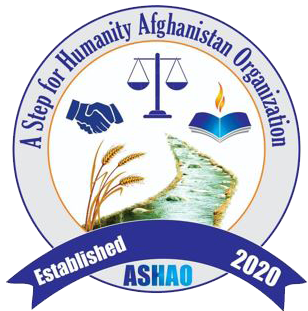Projects implemented by ASHAO
ASHAO has successfully implemented a variety of projects focused on humanitarian aid, education, capacity building, agricultural development, and community empowerment. These initiatives aim to address the immediate needs of vulnerable communities in Afghanistan while fostering long-term resilience and self-sufficiency. Below are some of the key projects implemented by ASHAO:
- Emergency Humanitarian Aid Program
Objective: To provide immediate relief to communities affected by conflict, natural disasters, and humanitarian crises.
- Activities:
- Distribution of food, clean water, and medical supplies to displaced families.
- Provision of emergency shelter and winterization kits during harsh winter months.
- Psychosocial support and protection services for vulnerable groups, particularly women and children.
- Impact: Thousands of families in crisis-affected regions received immediate support, helping them survive and begin the process of recovery.
- Women’s Empowerment and Capacity Building Program
Objective: To empower women and girls by providing access to education, vocational training, and leadership opportunities.
- Activities:
- Establishment of community-based learning centers for women and youth.
- Vocational and technical training programs, including skills such as tailoring, handicrafts, and computer literacy.
- Leadership and advocacy workshops to help women become active participants in community development.
- Impact: Over 1,000 women and girls gained new skills, increasing their independence and participation in local economic and social activities.
- Agriculture and Rural Development Project
Objective: To enhance agricultural productivity and improve livelihoods for rural communities.
- Activities:
- Training farmers on sustainable agricultural practices, such as drip irrigation, organic farming, and crop rotation.
- Provision of high-quality seeds, fertilizers, and farming tools.
- Facilitating access to markets and providing financial support to smallholder farmers.
- Impact: Farmers increased crop yields and income, contributing to local food security and economic stability. The project supported sustainable agricultural practices that are environmentally friendly and cost-effective.
- Winterization and Shelter Support Program
Objective: To provide essential shelter and winterization assistance to vulnerable populations during the harsh winter months.
- Activities:
- Distribution of winterization kits, including blankets, warm clothing, and fuel.
- Construction of temporary shelters for displaced families.
- Provision of essential heating materials for homes and community centers.
- Impact: Thousands of families were provided with the necessary materials to stay warm and safe during the winter, preventing cold-related illnesses and deaths.
- Orphan Support Program
Objective: To support orphaned children with education, healthcare, and psychosocial services.
- Activities:
- Provision of educational materials, school fees, and uniforms to orphans.
- Healthcare services, including routine medical check-ups, vaccinations, and mental health support.
- Psychosocial programs to help orphans cope with trauma and rebuild their lives.
- Impact: Hundreds of orphaned children received support to continue their education and access essential healthcare services, while also benefiting from emotional support and guidance.
- Disaster Risk Reduction and Resilience Program
Objective: To build resilience within communities vulnerable to natural disasters, such as floods and earthquakes.
- Activities:
- Community-based disaster preparedness training.
- Development of early warning systems to help communities prepare for impending disasters.
- Construction of resilient infrastructure, including flood-resistant housing and water storage systems.
- Impact: Communities became better equipped to respond to and recover from natural disasters, with reduced losses and faster recovery times.
- Child Protection and Education Support Program
Objective: To ensure that children, particularly those in conflict-affected areas, have access to education and protection services.
- Activities:
- Construction and renovation of schools in remote areas.
- Provision of learning materials, including textbooks, pens, and notebooks.
- Child protection activities, including identifying and supporting children at risk of exploitation or abuse.
- Impact: Over 2,000 children, including many displaced by conflict, gained access to quality education and child protection services.
- Food Security and Livelihoods Project
Objective: To improve food security and create sustainable livelihoods for families in need.
- Activities:
- Distribution of food assistance to families in food-insecure areas.
- Livelihood support through cash-for-work programs and small business grants.
- Agricultural extension services to improve food production and diversify livelihoods.
- Impact: Enhanced food security and increased income for families, helping them to transition from aid dependence to self-sufficiency.
- Health and Nutrition Program
Objective: To improve health and nutrition outcomes for vulnerable populations, especially children and women.
- Activities:
- Nutritional support, including food supplementation and breastfeeding promotion programs.
- Health education campaigns focusing on hygiene, sanitation, and maternal health.
- Mobile health clinics providing primary healthcare services in remote areas.
- Impact: Improved nutrition and health outcomes, particularly for women and children, with fewer instances of malnutrition and disease.

